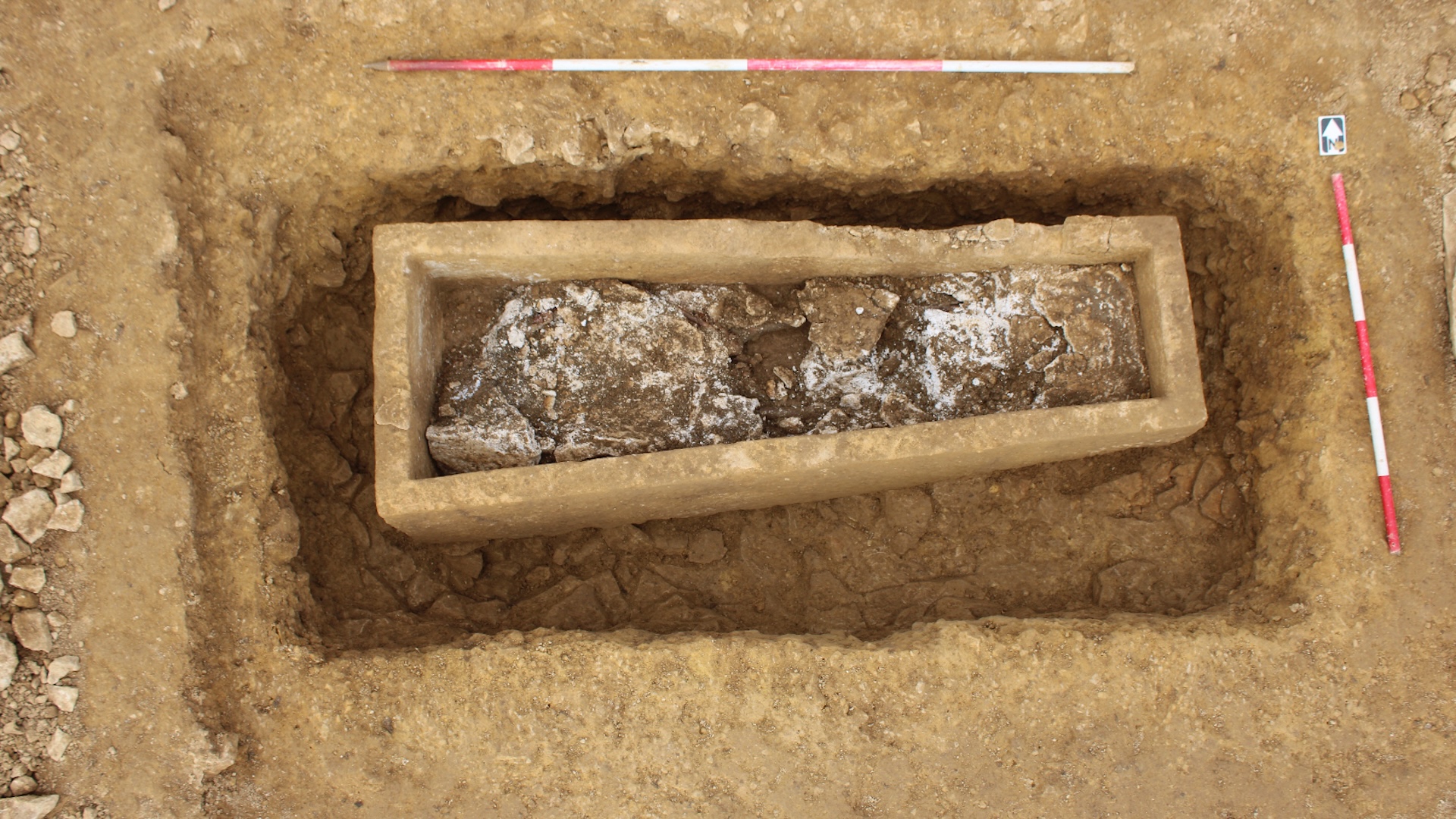
Archaeologists in England have discovered a Roman-era cemetery with an unusual burial at its center — a stone coffin holding a deceased individual encased in liquid gypsum.
This practice is known from Roman times, but archaeologists still don't fully understand it. The mineral was made into a cement or plaster and then poured over the deceased person to make a hard cast. This process sometimes preserved organic remnants such as clothing or a burial shroud. The gypsum from the newfound burial is fragmentary, but it retains impressions of the individual's shroud and preserved a small piece of fabric.
This type of burial is largely known from Roman urban centers — such as York in England, which has 45 documented gypsum burials — but it's rare to find them in rural regions, as this one was. In this case, "we do believe this would have been an expensive endeavour and is therefore indicative of a high-status individual," said Jessica Lowther, community archaeologist for Headland Archaeology, the company that did the excavation.
The gypsum was artfully carved and came from a quarry about 30 miles (50 kilometers) away from the site, and it would have cost a big sum to purchase and transport, according to a statement from Headland Archaeology. These factors, combined with the grave's central location in the cemetery, indicate that the person buried there was elite or part of a prominent family.
While no grave goods were found in the coffin, archaeologists did find a glass vessel nearby that may have once held a libation, or toast for the deceased, according to the statement.
Related: 'Liquid gypsum' burial from Roman Britain scanned in 3D, revealing 1,700-year-old secrets
Archaeologists found the cemetery ahead of construction work that aims to widen a highway in Cambridgeshire. The cemetery dates to the Roman period in Britain (A.D. 42 to 410).


The cemetery sat along an ancient Roman road. During the excavation, the team found 14 graves around the central gypsum burial and unearthed seven more beyond a boundary ditch.
Curiously, the cemetery had a variety of burial types, which is uncommon for such a small burial ground. These included cist burials, which are lined with long stones; cremation burials; decapitation burials; burials with iron nails, which hint at the presence of a wooden coffin; and even an empty grave, according to the statement.
Burials from both inside and beyond the boundary ditch had prominent grave goods, including jewelry. One burial, southwest of the gypsum grave, had a large pile of grave goods at the buried individual's feet. This person died between the ages of 16 and 20 and was female, a bone analysis found.


"One theory as to why she was buried with this cache at her feet instead of wearing it is that it could have been meant for her dowry," Lowther told Live Science in an email. "Among these grave goods were a beautiful pair of silver earrings, nine copper alloy bracelets, three copper alloy rings, and a silver band and oval plate, thought to be the shank and bezel of a signet ring."
Another burial with grave goods, located beyond the boundary ditch, belonged to a child. This youth's grave had 10 copper alloy bracelets, four bone bracelets, a bone comb and also a pair of silver earrings that were "remarkably like those from the burial of the young woman," Lowther said.
But their similarity doesn't mean the two individuals are related, as "this also could be the style of a distinctive local craftsperson," she noted.
Specialists plan to study the remains, which "will hopefully be able to untangle the questions surrounding the longevity of the cemetery and how it fits into the surrounding landscape, as well as shedding some light on the individual stories of those buried here," Lowther said.







